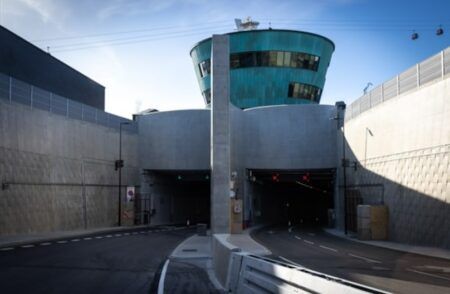According to the latest Minnesota Department of Transportation (MnDOT) ‘Metropolitan Freeway System Congestion Report’, traffic on the Minneapolis-Saint Paul metropolitan area’s freeway network is continuing to rise, increasing pressure on the agency to find solutions.
The report shows that the percentage of miles of the Twin Cities’ freeway system that was congested increased from 21.1% in 2014 to 23.4% in 2015. Congestion is defined as traffic flowing at speeds less than 45mph (72km/h). MnDOT gathers congestion data through surveillance detectors in the roads and through field observations. For the 2015 congestion report, the Regional Transportation Management Center collected data from the 3,500 detectors embedded in the mainline roadway on the Twin Cities’ freeways. The agency has a total of 5,500 surveillance detectors, which includes ramps and arterials on the region’s network. The annual congestion report takes a snapshot of metro freeways each October, the month with the most typical traffic patterns.
Many factors can affect congestion levels, such as the local economy, population growth, gas prices, transit ridership, and vehicle miles traveled (VMT). MnDOT’s goal is to control and slow the growth of congestion as best it can. Strategies to do so identified in the report include:
Active traffic management – MnDOT currently uses an advanced system of cameras, loop detectors, ramp meters, FIRST (freeway incident response safety team) incident response trucks, changeable message signs and other traveler information systems. Benefits include increases in average throughput, capacity and reliability, and decreases in incidents and travel time; Spot mobility improvements – these lower cost/higher benefit projects improve traffic flow by relieving bottlenecks on freeways and arterials, improving geometric design, and addressing safety hazards. Some enhance capacity by adding short auxiliary lanes, and others focus on system management; MnPASS – MnDOT currently operates MnPASS Express Lanes on I-394, I-35W and I-35E. During peak-travel times MnPASS lanes provide a congestion-free travel option for those who ride bus transit, motorcycles, and vehicles with two or more passengers or motorists driving alone who are willing to pay a fee. The lanes help move more people through a highway corridor and offer commuters a faster, more reliable travel choice during peak-travel times. They can also improve bus transit service and increase ridership. MnDOT and the Metropolitan Council plan to add MnPASS lanes on other freeways throughout the Twin Cities metro area.
“Congestion in metropolitan areas is often inescapable,” explained Brian Kary, MnDOT freeway operations engineer. “We try to strike a reasonable balance between existing road capacity and the demand for roads, by managing traffic particularly at peak travel times. We’re doing the best we can to try to slow that growth, but the growth in the population and the demand on the freeway system is more than we can keep up with. It’s gonna probably continue to grow, because there’s just going to be more and more people wanting to use that system, and just, you know, not enough funds to be able to continue to expand that system as quickly as that demand is increasing.”




